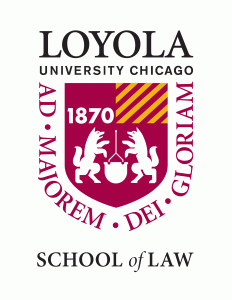It is often said that it takes a village to raise a child. Raising and educating children is not an easy task, especially in “villages” where resources for youth are comparatively scarce. To remedy such shortages, students have looked to tools beyond their families and schools to achieve personal success. In this way, non-profit organizations have long supported students through moments such as high school graduation and applying for college.

Photo from Pexels.
There are about 1.8 million registered non-profit organizations in the US, many of which provide resources directed at students. To prevent students from having to seek out these organizations on their own, school districts should facilitate this process by forming meaningful partnerships with non-profit organizations.
How education non-profits can be an asset to school systems
In many ways, education non-profit organizations step in to fill the gaps that schools experience. Each organization targets unique areas of education by providing resources relating to tutoring, college access, after-school programming, and mental health services. Some of the most prominent organizations doing this work include City Year, AmeriCorps, and Khan Academy. These groups have a successful track record of bringing free resources to students who need them most.
Other organizations add value to school systems on the back end. For example, The New Teacher’s Project (TNTP) partnered with the New York City Department of Education to recruit thousands of teachers in response to a shortage of qualified educators that disproportionately affected students of color in 2000. As reflected here, schools do not always have the means to solve problems on their own. This is where non-profits can be of assistance to the education system.
The relevance of non-profits was amplified during the COVID-19 pandemic. Schools transitioning to remote learning presented the field of education with unforeseeable challenges. Some of these obstacles included leaving low-income students without access to school meals and the necessary technology to attend class virtually. As expected, non-profits acted promptly to address these disparities.
Donating over 5,000 computers to students in need, Bridging Tech provided students with access to technology. These types of interventions are especially beneficial to Black and Hispanic students who are more likely to lack the necessary tools for remote learning. There will always be a demand for these kinds of resources that address educational disparities. Moving forward, schools should consider ways they can make the most of organizations that make it their mission to support students.
Even students can recognize the role that non-profits play in propelling their education forward. For example, Breakthrough Central Texas is an organization that seeks to create more first-generation college graduates. Breakthrough provides tutoring, mentoring, and advising that follow participants from middle school to college. Participants know better than anyone how these comprehensive programs have academically empowered them, especially during the pandemic. One college graduate notes, “Breakthrough played an integral role in making sure I stayed on track to achieve my college dreams.”

Photo from Pexels.
Ways to leverage non-profit resources through formal partnerships
The idea of partnerships between school systems and non-profit organizations is not a new one. In fact, many organizations rely on formal partnerships with school districts as a vehicle to provide their services. For example, PENCIL operates on a model that connects schools with business professionals that mentor students, providing them with resources to successfully meet their career goals. In PENCIL’s three-year retrospective review, the organization finds that this program provides students with meaningful networking opportunities and recommends that these school partnerships be scaled and expanded in New York City.
Examples such as this one raise the question of how other school districts can establish similar connections with local organizations. In 2016, the St. Louis Public Schools Foundation published the Guide for Effective School & Community Partnerships. This guide, directed towards the St. Louis school system, provides resources for schools to select, form, and evaluate partnerships with educational non-profits. Specifically, the guide provides tools to help schools form contractual relationships with relevant organizations through a form called a “memorandum of understanding” (See page 9 of the guide). These contracts officially recognize the partnership, define the obligations of both parties, and provide standards to measure performance. The benefit of forming an agreement with a local organization is that it helps schools select partners that are meaningful and tailored to a school’s specific needs.

Photo from Pexels.
Schools can act now to build relationships with community organizations
Every school district has areas for improvement that cannot always be resolved internally. Looking to community assets can be one way that schools can counteract shortcomings. There is also more to gain from non-profit partnerships than just resources. These connections can allow students to identify as a part of a larger community. Schools that have prioritized community education have seen improvements across all domains of development.
Although helpful, it is not necessary that all partnerships between schools and external groups result in a contractual agreement. Instead, schools can develop less formal relationships by providing physical spaces for non-profit events or sending emails to parents about available resources. Schools are in the best position to identify the specific needs of every child and should address them by exhausting all available tools. In looking to the surrounding community for support, schools will expand their networks and effectively prepare students for their next stage in life.
Jacob Morales is a student at Loyola University Chicago School of Law and wrote this blog as a part of the Education Law and Policy course.

